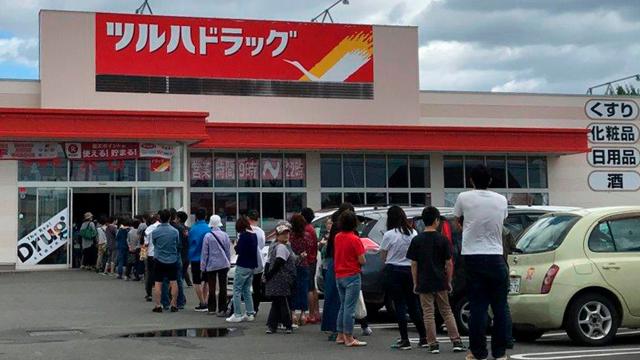A Japanese nuclear power station in Hokkaido is operating on emergency power after the region was hit by a 6.7-magnitude quake in the early hours of Thursday morning, Reuters reported. However, though the event carries unsettling overtones of the Fukushima Daiichi nuclear disaster in 2011, authorities say there is currently no danger of any similar radioactive release occurring.
100 people are injured and 19 missing following the quake on Thursday, Reuters reported, citing Japanese broadcaster NHK. The seismic event knocked out local power, forcing Hokkaido Electric Power’s Tomari nuclear plant to switch to emergency generators to keep its three reactors from overloading.
Reuters wrote:
The station’s fuel rods are being cooled with emergency power supplied by diesel generators, Chief Cabinet Secretary Yoshihide Suga told reporters on Thursday.
There were no radiation irregularities at the plant, Suga said, citing the operator.
The atomic regulator said the diesel generators have enough fuel to last seven days.
The Fukushima incident occurred after an earthquake off the coast of Tōhoku prefecture on Honshu, Japan’s largest island, caused a tsunami. The disaster killed some 19,000 people, as well as knocked out power to and swamped backup generators at the Fukushima facility. The result was three nuclear meltdowns and hydrogen-air explosions that spread a radioactive plume up to 25 miles away, as well as resulted in authorities dumping massive amounts of contaminated material into the oceans.
Scientists say most of that radiation quickly faded or was otherwise diluted. Most, but not all, also agree that there is likely a low risk to public health outside of the immediate region of the plant. The primary danger is to the thousands of workers involved in its cleanup. On Wednesday, the New York Times reported, the Japanese government acknowledged the first death of a worker from radiation exposure at the plant, a subcontractor for its operator Tokyo Electric Power Company that developed lung cancer in 2016.
Japan idled all of its 54 nuclear power facilities after the incident, but seven have since been reactivated “after a protracted relicensing process,” Reuters wrote. The Conversation wrote last year that the Japanese government estimated the total cost of the Fukushima at around $US188 ($262) billion, while polls indicated the Japanese public had lost faith in the safety of nuclear power. The cleanup effort at the facility still generates huge amounts of nuclear waste, and Tokyo Electric doesn’t expect to begin clearing fuel debris from the destroyed reactor cores until into the next decade.
According to Reuters, Prime Minister Shinzo Abe told reporters that he is coordinating emergency response for the earthquake on Thursday. A government spokesman added that a Mitsubishi Steel Manufacturing plant in the city of Muroran also caught fire, but is being brought under control.
[Reuters]
